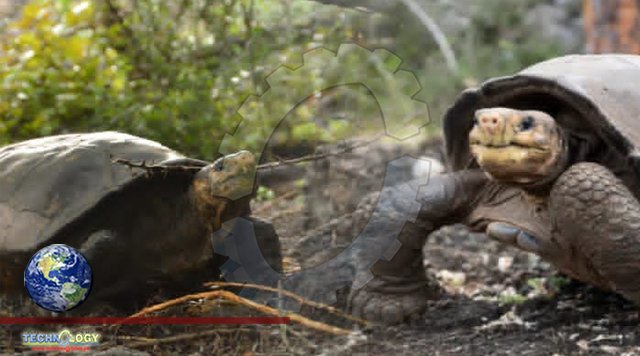The discovery of a lonely tortoise doubles the number of known individuals of the “phantasticus” species Evolutionary scientists were perplexed by the finding of a single, little female Giant Tortoise in 2019 that lives on one of the Galapagos Islands’ most isolated islands. Only one other tortoise, a huge male discovered in 1906, has ever been discovered on Fernandina Island, an isolated island on the renowned archipelago’s western tip.

According to research from Yale University published in the journal Communications Biology, Fernanda, what the scientists named the 50-year-old tortoise, and the male specimen from the 20th century now kept at the California Academy of Sciences, are closely related. This discovery doubles the number of known members of Chelonoidis phantasticus. According to the nonprofit organization Galapagos Conservancy, there are thought to be 15 different species of giant Giant Tortoise the Galapagos Islands. The new discovery clearly shows that the two tortoises discovered on Fernandina Island belong to their own lineage and are more closely related to each other than to any other species of Galapagos tortoises, whose numbers have been reduced by 85% to 90% since the early nineteenth century, owing largely to the arrival of whalers and pirates who killed them for food. “The finding of one alive specimen gives hope and also opens up new questions as many mysteries still remain,” said Caccone, a member of Yale’s Faculty of Arts and Sciences. “Are there more tortoises on Fernandina that can be brought back into captivity to start a breeding program? How did tortoises colonize Fernandina and what is their evolutionary relationship to the other giant Galapagos tortoises?”
The tortoises of Fernandina Island were believed to have been driven to extinction by volcanic eruptions on the island, including approximately 25 in the last two centuries. Areas of vegetation, scientists have theorized, were reduced by lava flows. he Galapagos National Park and the Galapagos Conservancy plan to scour the island of Fernandina for relatives of Fernanda in hopes of preserving the species. The presence of additional Giant Tortoise scats and tracks suggests they may find more animals on the island, Caccone said. If more tortoises are found, she said, conservationists could start a captive breeding program. Deciphering the evolutionary relationship between the two Fernandina tortoises might be trickier. For one thing, they look very different. The male specimen has a large and protruding carapace characteristic of saddleback Giant tortoise, while Fernanda has a smaller, smoother shell. Caccone thinks that this shape difference is possibly due to stunted growth as a result of limited food options. And while the genomes of the two animals are very similar, researchers discovered differences within the mitochondria, the energy-producing portion of cells that are passed down maternally. Since mitochondrial DNA is inherited from the mother, Caccone said it is possible that Fernanda is a hybrid, the progeny of a Chelonoidis phantasticus male and a C. nigra female, a now extinct species from the island of Floreana, the larger neighbor of Fernandina.
Source: This news is originally published by scitechdaily